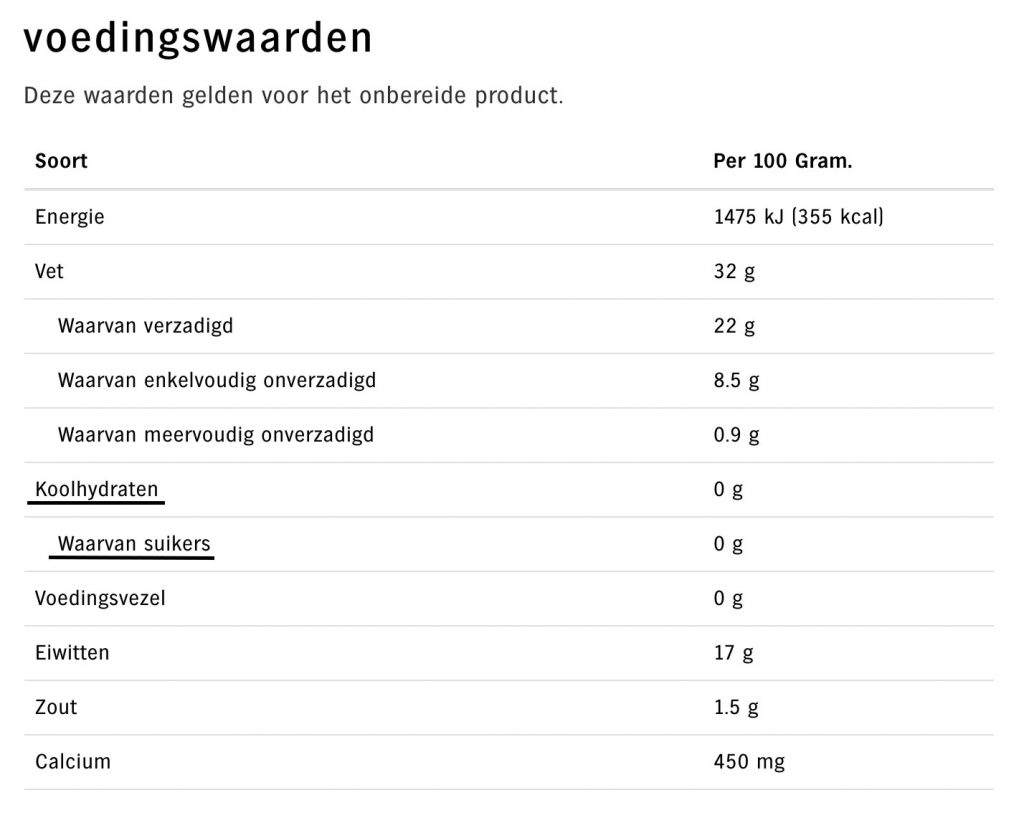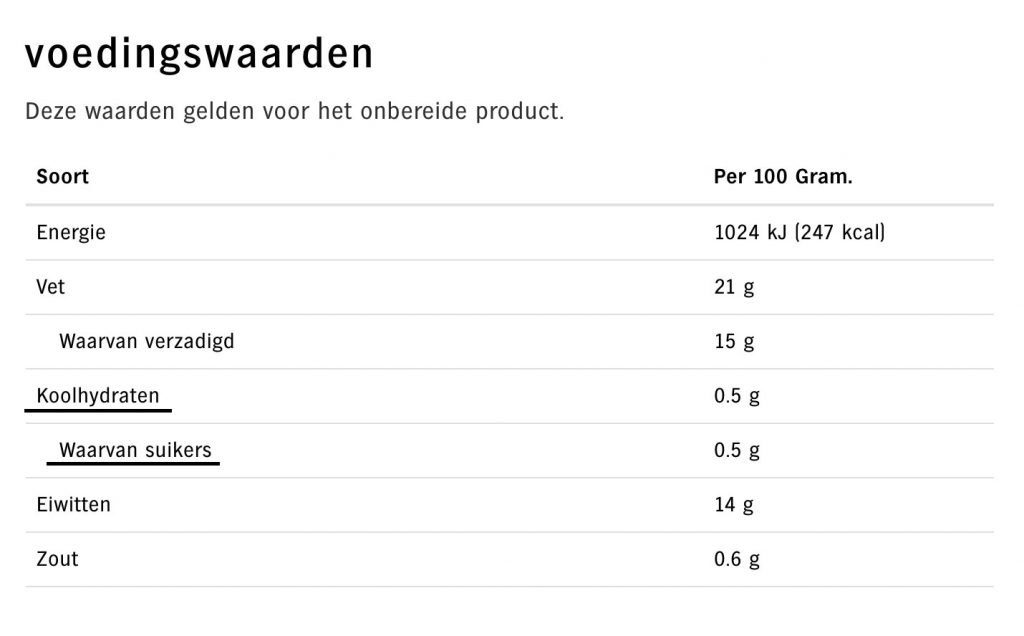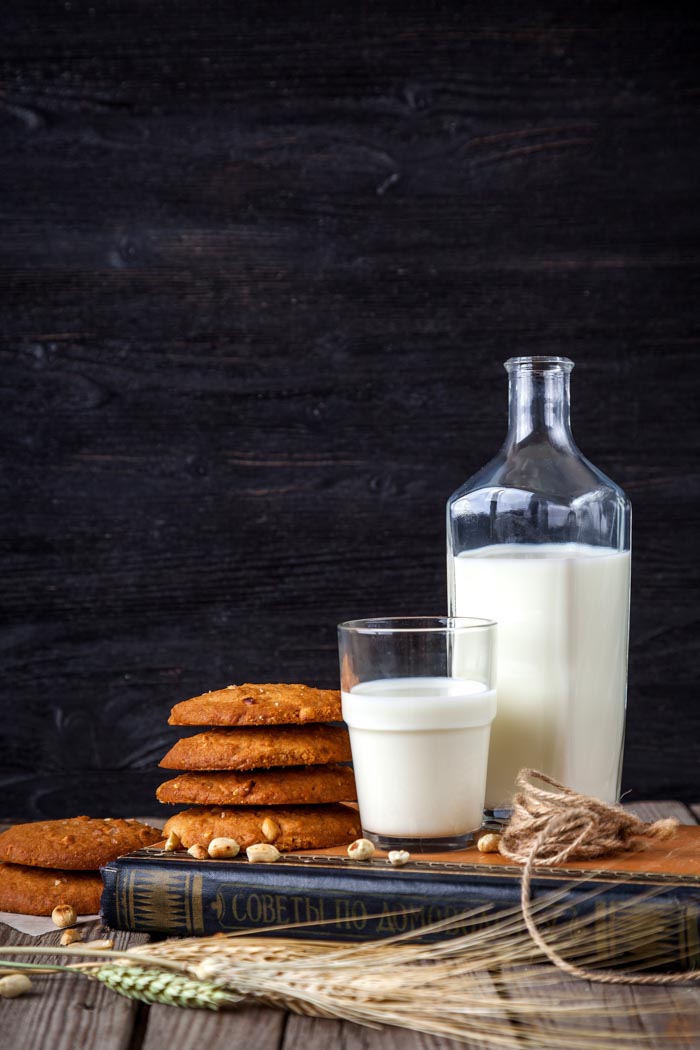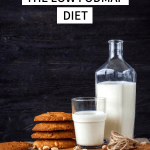
Lactose and the low FODMAP diet
From reactions that I get below recipes, I notice that lactose and the low FODMAP diet still causes some confusion and therefore I wanted to dive into this in a blog. I have a lactose-intolerance myself, but I still eat several kinds of cheese and sometimes small amounts of other foods that contain lactose. How does that work? And how much lactose can you have when you are on the low FODMAP diet? I explain it in this blog!
The low FODMAP diet is not a lactose-free diet
The “D” in the word FODMAP stands for disaccharides and this is lactose. Lactose is one of the FODMAP groups and can cause stomach problems if you don’t tolerate it and eat it in large amounts. But, as you probably know, the FODMAP diet is a low FODMAP diet and not a no FODMAP diet. This means that you can still eat FODMAPs in small amounts and so you can also eat lactose in small amounts.
The threshold that Monash University sticks to when deciding what the low FODMAP serving size is of a product that contains lactose, is 1 gram of lactose. When a serving of, for example, a kind of cheese, contains less than 1 gram of lactose, it is low FODMAP.
For dairy products and cheeses that don’t contain any other carbohydrates (for example because sugar or some other flavours have been added), you can find out how much lactose the product contains by checking the nutrition label. If the total amount of carbohydrates/sugar is lower than 1 gram it is low FODMAP. This is because lactose is a sugar, milk sugar, and is therefore a carbohydrate.
For example: take a look at this label for brie (it is in Dutch, but I have underlined the carbs and sugars). The brie contains 0 gram of sugars per 100 gram and is therefore low FODMAP. You can also see this in the Monash app. For brie it says “Only trace amounts of FODMAPs were detected in this food. Nutritional guidelines recommend consuming 2-3 serves of dairy foods (cheese, yogurt, milk or alternatives) per day. Please also note cheese is high in fat and when consumed in excess can be an additional symptom trigger”.

The label is in Dutch, but: koolhydraten = carbohydrates, waarvan suikers = sugars
Another example is mozzarella. This mozzarella contains 0.5 gram of lactose per 100 gram. Mozzarella contains more lactose than brie, but you can have a low FODMAP serving size of it. For mozzarella, Monash University gives a serving size of 40 gram. The app says: “This serving size is low in FODMAPs and should be tolerated by most individuals with IBS. Large servings (630 g or 4 cups) contains moderate amounts of lactose, intake should be limited if you malabsorb lactose”

The label is in Dutch, but: koolhydraten = carbohydrates, waarvan suikers = sugars
I am not sure how Monash got to 630 gram because if you eat more than 200 gram mozzarella, you will be over 1 gram of lactose already. But the amount of lactose in mozzarella might differ per brand. It is always wise to check the label of products yourself. Probably it will not happen often that you eat 200 gram in mozzarella in one go and at least you can safely eat quite a large amount of mozzarella 🙂
You can check the Monash FODMAP app to find out what the low FODMAP servings are for different dairy products.
What if you have a lactose-intolerance?
If you have a lactose-intolerance, your body does not produce enough lactase. Your body needs the enzyme lactase to break down lactose into galactose and glucose, so it can be digested. If your body doesn’t produce enough lactase, your body cannot digest the lactose and you will get symptoms when you eat milk or yoghurt. Symptoms often are stomach ache, bloating and cramps. Usually these symptoms will go away when you stop eating foods with a high amount of lactose in it.
How much lactose can you consume when you have a lactose-intolerance?
If you have a lactose-intolerance, your body doesn’t make enough lactase to break down the lactose. But usually your body is still producing some lactase, which means that you can still tolerate a small amount of lactose. Most people with a lactose-intolerance tolerate 12 to 15 gram of lactose per day and sometimes even more when they spread it out over the day. 12 to 15 gram of lactose is equal to about 250 ml of milk and that is quite a lot.
Because of this, you don’t have to avoid dairy products completely when you have a lactose intolerance. You simply have to limit them.
Important: there are people with a lactose-intolerance who already get symptoms when they eat a very small amount of lactose and other people can tolerate more than 12 to 15 gram per day. Therefore it is important to test for yourself how you react to lactose. You do this in the reintroduction phase of the low FODMAP diet.

No lactose-intolerance? Then this FODMAP group won’t be a problem
Lactose is only a FODMAP that you have to eat in moderation if you have a lactose-intolerance or if you have tested and found out that you react to lactose.
If you tolerate lactose, you can continue to consume foods with lactose. If you are not sure yet how you react to lactose at the start of the FODMAP diet, you can best eat low lactose according to the guidelines of the elimination phase. In the reintroduction phase, you will test how you react to lactose.
Also when you already know that you have a lactose-intolerance, it is worth it to test different dairy products. Just to find out how much lactose you tolerate. I already knew that I had a lactose-intolerance when I started the low FODMAP diet, but I still tested several dairy products to find out my tolerance levels for individual foods.
I am quite sensitive to lactose, so when I put a splash of milk into my coffee, I will definitely get symptoms. But when I eat products that contain a little bit of lactose or traces of lactose (the low FODMAP amounts), such as butter (read more about butter on the low FODMAP diet here) or cheese, I tolerate it. It is nice to know your personal threshold!
Supplements for lactose
There are also supplements for lactose available that help your body break down the lactose. These lactase pills contain the enzyme lactase. If you take them when you are consuming something with lactose in it, the lactase in the pills will help your body to break down the lactose. These supplements are great for when you are eating out.
I often use them in restaurants, so I have a slightly larger variety of things to choose from. I also love ice cream and with these supplements, I can enjoy an ice cream now and then. I have written a blog about lactase pills where I explain exactly how the pills work and how you use them.
The most important thing to remember when you use these pills is to take a high enough dosage. I thought for a few years, that the pills didn’t work for me when I ate ice cream because I would always get bloated after eating ice cream. I usually took 12.000 FCC with an ice cream (in this blog, I explain all about FCC). But at one point I thought, what if I take a double dosage (24.000 FCC). And guess what? No bloating at all!
I had been taking a too small dosage all these years. So if you think lactase pills are not working for you, it is definitely worth to try upping the dosage that you take to see if that makes a difference.

I hope that I have been able to explain what the deal is with lactose and the low FODMAP diet! If you have any questions, feel free to ask them in the comments.
Sources used for this article:
- Lactose and dairy products on low FODMAP diet – Monash University
- What is lactose intolerance – Monash University
- Let’s talk about dairy & the low FODMAP diet – A little bit yummy
Together we go for a calm belly!
Subscribe to the Karlijn's Kitchen e-mail newsletter for more tips and recipes and receive the ebook 10 things I wish I had known when I started the FODMAP diet for free!

